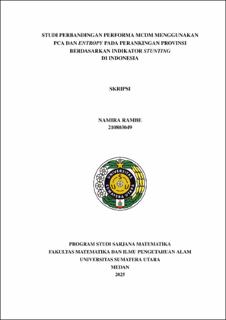| dc.description.abstract | Stunting has serious impacts on children’s health and, in the long term, affects the quality of human resources, particularly in countries with high stunting rates such as Indonesia. Therefore, it is crucial to reduce stunting rates through regional mapping based on the ability to manage stunting and by evaluating its contributing factors. A Multi-Criteria Decision Making (MCDM) approach can be applied, utilizing weight ing techniques such as Principal Component Analysis (PCA) and Entropy, and rank ing methods including MARCOS, COPRAS, and WASPAS. The weighting results from PCA and Entropy respectively indicate that nutritional status among toddlers (C4) and the number of people living in poverty (C7) are the largest contributing factors, while food assistance (C10) and the Gini ratio (C6) are the least contributing factors. Using PCA weights in all MCDM methods, DKI Jakarta (A11) emerged as the best alterna tive, while Papua Pegunungan (A35) was ranked the lowest. Similarly, the ranking re sults using Entropy weights across all ranking methods consistently placed DKI Jakarta (A11) at the top and Papua Pegunungan (A35) at the bottom. This study found that the rankings produced by the PCA and Entropy weighting methods were identical, with correlation coefficients ranging from 0.989 to 0.997, and correlations among MCDM techniques using the same weights ranging from 0.930 to 0.939. | en_US |


